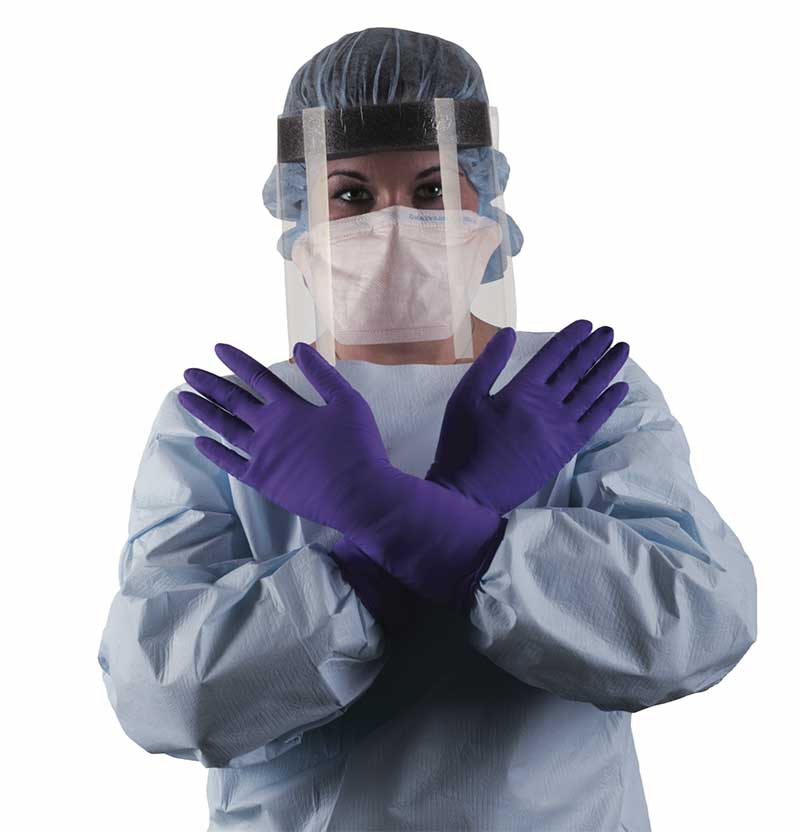As of December 1, 2019, USP <800>, takes effect! These new guidelines are designed to reduce the risk of managing hazardous drugs and help reduce the risk to patients and healthcare workers.
As a reminder, here’s why it’s so important to ensure your hospital is following the new USP <800> guidelines: there is no safe level of exposure to cytotoxic chemotherapy drugs for healthcare workers. Exposure to chemotherapy drugs increases that person’s risk of chromosomal damage, cancers and adverse reproductive outcomes. That’s why regulations issued by OSHA and USP on handling hazardous chemotherapy drugs are enforceable and apply to all healthcare workers.
There’s no doubt that many of the USP <800> changes are challenging and expensive, especially the new ventilation, heating and air conditioning requirements. Those renovations take time and can range from $100,000 to more than $1.5 million. But there are things your medical facility must have in place or be working towards to be in full compliance—and ensure your staff and patients are protected from hazardous drugs:
- Determine your processes and get them in place.
USP <800> requirements cover a lot of territory: the responsibilities of personnel handling HDs; facility and engineering controls; procedures for deactivating, decontaminating, and cleaning; spill control; and documentation. It just makes sense to have an interdisciplinary team – from facilities staff to pharmacy, nurses and safety/security people – to make sure all compliance aspects are addressed. Determine specific areas that have the highest level of contamination or where there is routine contamination, then implement control processes. Then be sure to document your environmental process, including air and surface sampling procedures, frequency of monitoring, and how you interpret and resolve issues. - Train your employees so they’re ready for anything.
Properly educating and training your healthcare providers and pharmacy workers—as well as risk management, legal, and drug delivery personnel—is critical to protecting both patients and your healthcare team. This training includes safe handling instructions, required PPE, how to don and doff, and what to do case of a spill. - Be sure you have the right chemo-rated PPE on hand.
The protection of your staff against hazardous drugs is only as good as the PPE they are using. The PPE must be chemo-rated and properly worn. The USP <800> list may be significantly longer than what is being currently used. For example, a 2008 NIOSH study found that a significant number of responding nurses reported not even wearing gloves and gowns while administering chemotherapy. But according to USP <800> guidelines, PPE for use in administering chemotherapy includes:- Coverage for hair and beards
- Goggles and a face shield
- A fit-tested N95 respirator mask
- 2 pairs of gloves tested against drugs commonly used in chemotherapy
- A chemo-rated impervious gown that extends below knees and closes in the back (or is fully covered in the back)
- Shoe or boot covers
Making the correct PPE readily available is essential to staff protection, along with proper training on PPE requirements, donning, doffing and safe disposal.
- Address clean-up by making spill kits readily available.
Without proper safe handling practices, hazardous drugs rarely stay confined to the containers they are compounded in, or the devices used to administer them. Because surface contamination can pose a health risk to both healthcare workers and patients, you should have a consistent wiping regimen to help you monitor hazardous residues you can’t see.You should also stock approved hazardous drug spill kits and have them quickly available wherever hazardous drugs are delivered, compounded, transported within the hospital, and administered to patients. They should also be kept near chemo storage equipment and where administration devises are disposed of after administration. Remember, proper PPE must be worn during deactivation/decontamination, cleaning and disinfection, spill containment and waste disposal.
Your hospital may still be in the design or construction phase of some of the more complex aspects of USP <800> guideline compliance. But these four steps forward will go a long way toward protecting your healthcare staff, and in turn, your hospital’s patients.
In developing ASTM F2100-11, the organization tested material used to make medical face masks on five performance metrics. Based on their test scores, ASTM assigns a numerical rating for the barrier performance of the material:
Level 1 – for low risk of fluid exposure
Level 2 – for moderate risk of fluid exposure
Level 3 – for high risk of fluid exposure

